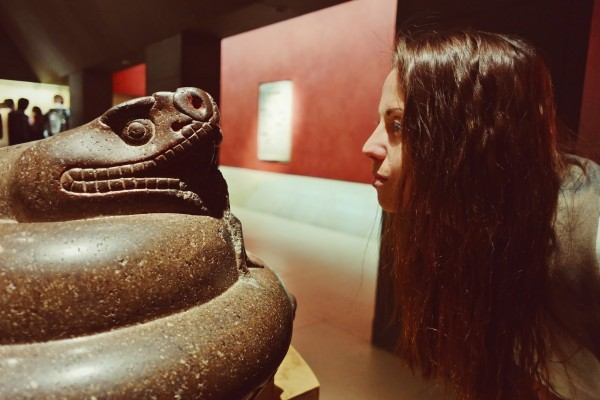
Sculpture at the British Museum, which remains the UK's most visited attraction
Visits to UK attractions up 5.5 million on 2015
The top ten most popular attractions remain in London, although visits are down at most attractions in this group.
Visits to UK attractions last year were up by 7.2% on 2015 – or by 5.5 million – with visits to Scottish attractions increasing at an even greater rate, according to the Association of Leading Visitor Attractions (ALVA).
In addition, the figures show that Wales, Northern Ireland and Cornwall had record tourism years in 2016.
“Our wide range of attractions and excellent heritage and museum collections continue to provide high-quality and exciting experiences, both to people who live here, and to our visitors,” said Scottish Government Tourism Secretary Fiona Hyslop MSP.
“The success of our leading visitor attractions will continue to play a vital role in making Scotland a destination of first choice for visitors from the UK and across the world.”
Rise of Scotland
Scottish sites achieved a 15.6% increase in visits, up to a total of 15 million in 2016.
The National Museum of Scotland became the country’s most-visited attraction, pipping Edinburgh Castle to the post with 1.8 million visitors – a 16% increase on 2015.
Visitor numbers were also up at several other Scottish sites, including Scottish National Gallery, Edinburgh (12%); Riverside Museum, Glasgow (11%); National War Museum, Edinburgh (13%); Gallery of Modern Art, Glasgow (9%); National Gallery of Modern Art, Edinburgh (29%); and Glasgow Cathedral (62%).
“Our visitor offering is stronger than ever before and it’s something that we will continue to build upon during 2017 as we mark Scotland’s Year of History, Heritage and Archaeology,” said Stephen Duncan, Director of Commercial and Tourism at Historic Environment Scotland.
Falling London attendance
Although all ten of the most visited attractions in the UK were once again in London, visits decreased at most attractions in this group.
The British Museum – the UK’s most visited attraction for ten years running – had 6.42 million visitors, a 6% decrease on 2015.
A similar trend was witnessed across some of the other leading London attractions, with the Southbank Centre, the Science Museum, the V&A, the Tower of London and The Natural History Museum all experiencing a decline over at least the past two years. Tate Britain is on a four-year decline, down to 1.08 million.
Speaking about the changes at the Tower of London, an Historic Royal Palaces spokesperson said it was pleased to be remain the “most visited paid-for attraction”, and pointed to heightened profile in previous years during events and exhibitions, such as the London 2012 Olympics and the ceramic poppies exhibition, as explanation for the decline in 2016.
ALVA also notes the Southbank Centre’s decrease has been caused by the “current closure for refurbishment of Queen Elizabeth Hall, Purcell Room and Hayward Gallery, which re-open in 2018”.
However, bucking the trend, the Royal Academy rose from 29th to 23rd in the table with a 17% boost in visitors. Equally, the National Gallery achieved a 6% increase in visitors, welcoming 6.26 million people, and Tate Modern saw attendance rise by 24%, taking it to third place in the list with 5.84 million visitors.
“Many of our members in Scotland, Wales, Northern Ireland and Cornwall had record years in 2016, although the first nine months of 2016 were unquestionably hard for our members, particularly in London, for many reasons,” Bernard Donoghue, Director of ALVA, commented.
“However, by the end of the year nearly all attractions were reporting growth from visitors from overseas and the rest of the UK.
“Like the 2015 figures, Scotland has continued to outperform the rest of the UK with a substantial increase in their visitor numbers. 2016 was a great year for Scottish Tourism – proving that Scotland is reaping the benefits of significant capital investment in attractions and creative programming by its institutions.”
Join the Discussion
You must be logged in to post a comment.